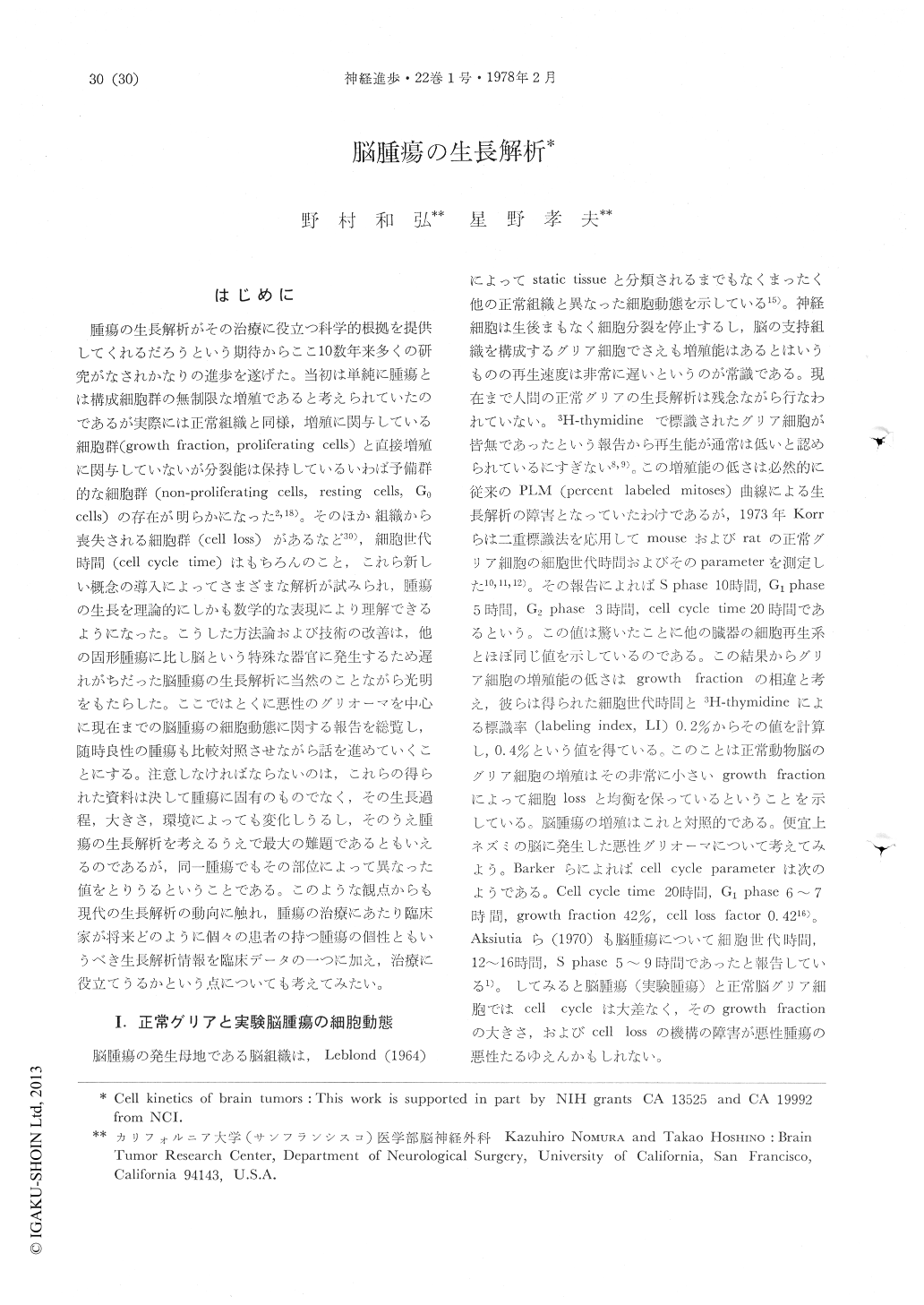Japanese
English
- 有料閲覧
- Abstract 文献概要
- 1ページ目 Look Inside
はじめに
腫瘍の生長解析がその治療に役立つ科学的根拠を提供してくれるだろうという期待からここ10数年来多くの研究がなされかなりの進歩を遂げた。当初は単純に腫瘍とは構成細胞群の無制限な増殖であると考えられていたのであるが実際には正常組織と同様,増殖に関与している細胞群(growth fraction,prolifcrating cells)と直接増殖に関与していないが分裂能は保持しているいわば予備群的な細胞群(non-prolifcrating cells,resting cells,G0 cells)の存在が明らかになった2,18)。そのほか組織から喪失される細胞群(cell loss)があるなど30),細胞世代時間(cell cycle time)はもちろんのこと,これら新しい概念の導入によってさまざまな解析が試みられ,腫瘍の生長を理論的にしかも数学的な表現により理解できるようになった。こうした方法論および技術の改善は,他の固形腫瘍に比し脳という特殊な器官に発生するため遅れがちだった脳腫瘍の生長解析に当然のことながら光明をもたらした。ここではとくに悪性のグリオーマを中心に現在までの脳腫瘍の細胞動態に関する報告を総覧し,随時良性の腫瘍も比較対照させながら話を進めていくことにする。
The authors review current studies on human brain tumor cell kinetics. Four growth parameters characterize the behavior of a neoplastic population: cell cycle time, growth fraction, tumor doubling time, and rate of cell loss. For prognostic purposes, tumor doubling time and cell loss play an important role, but for an understanding of the basic proliferative activity of tumor cells in relation to clinical chemotherapy, the most critical parameters are growth fraction and cell cycle time.

Copyright © 1978, Igaku-Shoin Ltd. All rights reserved.


